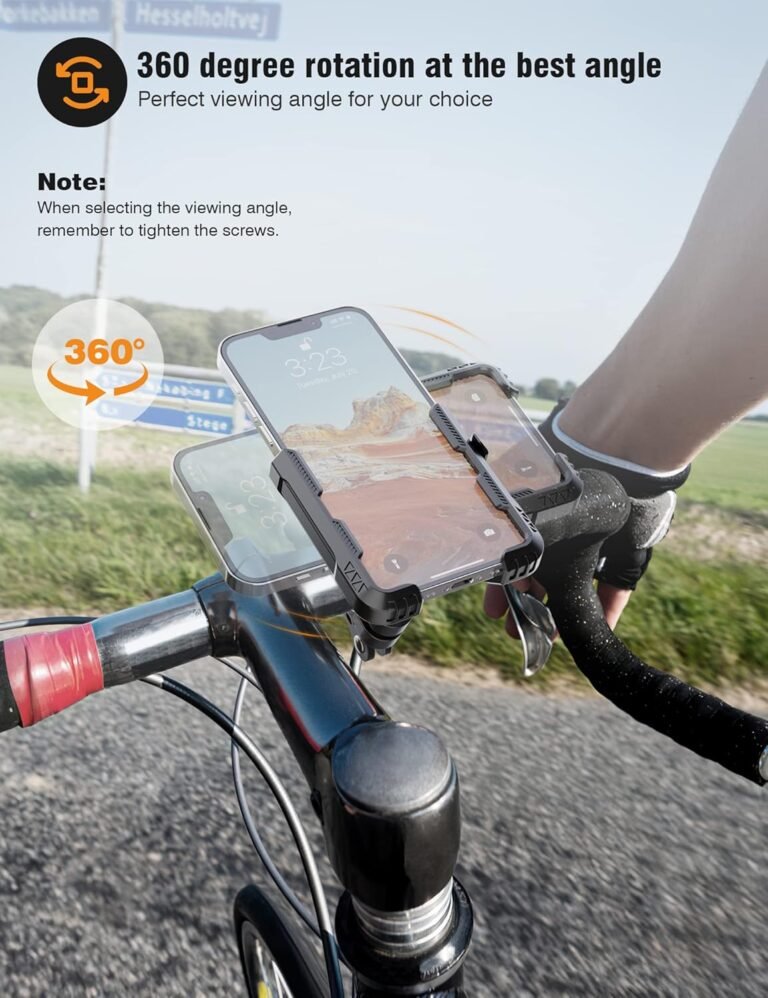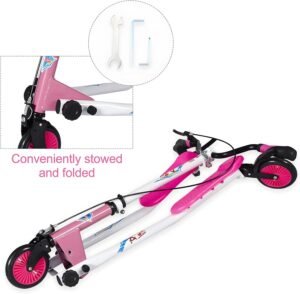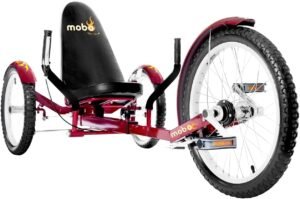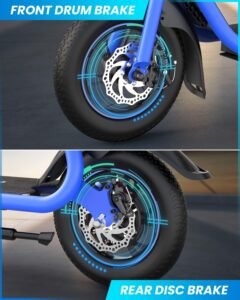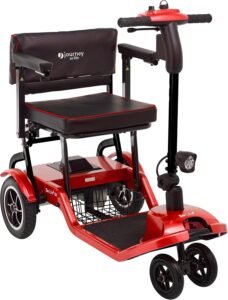
If you own an electric scooter and want to ensure its battery lasts as long as possible, then this article is for you. Discover simple and effective ways to extend the lifespan of your electric scooter battery. From proper charging techniques to storage tips, learn how to take care of your battery so you can enjoy smooth rides for years to come.

This image is property of images.pexels.com.
Check out our product reviews!
Regular Charging
Charge your battery regularly
To ensure the longevity of your electric scooter battery, it’s important to charge it regularly. This helps maintain the overall health of the battery and prevents it from losing capacity over time. Set a schedule for charging your battery, whether it’s daily or every few days, and stick to it.
Avoid overcharging
While regular charging is crucial, overcharging can be detrimental to your battery’s lifespan. Once your battery is fully charged, unplug it from the charger to avoid overcharging. Most electric scooters have indicators or lights that signal when the battery is fully charged, so keep an eye on those to prevent overcharging.
Use the correct charger
Always use the charger that came with your electric scooter, or one recommended by the manufacturer. Using an incompatible or generic charger can damage the battery and shorten its lifespan. The voltage and amperage of the charger should match the specifications of your battery.
Avoid fast charging
Though fast charging may seem convenient, it can put additional stress on the battery and lead to a shorter overall lifespan. Slow and steady charging is the best practice for maintaining the health of your electric scooter battery. Opt for regular-paced charging, even if it takes a bit longer, to ensure the longevity of the battery.
Proper Storage
Store your scooter and battery in a cool, dry place
Proper storage plays a significant role in maintaining your electric scooter battery’s health. Find a cool and dry place to store your scooter when it’s not in use. High temperatures and humidity can damage the battery and reduce its overall capacity. Avoid leaving it in direct sunlight or in areas prone to moisture.
Avoid extreme temperatures
Extreme temperatures, both hot and cold, can have adverse effects on your electric scooter battery. Avoid storing your scooter in places with excessive heat or cold, such as in a car trunk during summer or winter months. Extreme temperatures can cause the battery to degrade and lose capacity more quickly.
Disconnect the battery when not in use
If you aren’t planning on riding your electric scooter for an extended period, it’s recommended to disconnect the battery. This prevents any power drainage or degradation that may occur while the scooter is in storage. By disconnecting the battery, you ensure that it remains in the best possible condition during the scooter’s downtime.

This image is property of images.pexels.com.
Check out our product reviews!
Battery Maintenance
Keep the battery clean and dry
Regular cleaning is essential to maintain the optimal performance of your electric scooter battery. Use a soft cloth or mild cleaning solution to wipe away any dirt, dust, or debris that may accumulate on the battery. Make sure the battery is completely dry before reattaching it to your scooter.
Inspect the battery regularly
Take some time to visually inspect your battery for any signs of damage or wear. Look for cracks, bulges, or leakage, as these can indicate issues with your battery. Additionally, check the battery’s connections to ensure they are secure and free from corrosion. If you notice any significant damage or abnormalities, it may be necessary to replace the battery.
Avoid exposure to water or moisture
Electric scooter batteries are not designed to be exposed to water or excessive moisture. Moisture can seep into the battery and cause internal damage, leading to malfunctions or reduced capacity. Be cautious when riding in wet conditions, and always store your scooter in a dry place to prevent any moisture-related issues.
Check battery connections
Regularly check the connections between the battery and the scooter to ensure they are secure. Loose or corroded connections can impede the flow of electricity and cause problems with your electric scooter’s performance. If you notice any issues with the connections, it’s important to address them promptly.
Safe Riding Practices
Avoid excessive acceleration and braking
Consistent and controlled riding can significantly impact your electric scooter battery’s lifespan. Avoid excessive acceleration and aggressive braking, as this puts unnecessary strain on the battery. Gradually accelerate and decelerate to extend the battery’s overall capacity and help it last longer.
Use the scooter on smooth surfaces
While electric scooters are designed for various terrains, using them primarily on smooth surfaces can help prolong the battery’s lifespan. Rough or uneven surfaces can increase resistance and power consumption, draining the battery more quickly. Whenever possible, choose smooth paths or roads to reduce strain on the battery.
Avoid overloading the scooter
Every electric scooter has a maximum weight capacity, and exceeding it can have adverse effects on the battery’s lifespan. Avoid overloading your scooter with heavy bags or multiple passengers. Overloading not only puts unnecessary pressure on the battery but also compromises the scooter’s overall performance and safety.

This image is property of images.pexels.com.
Battery Calibration
Calibrate the battery periodically
Battery calibration is an important maintenance practice for electric scooters. Periodically calibrating the battery helps ensure accurate battery percentage readings and prolongs its life. Follow the manufacturer’s instructions on how to calibrate your electric scooter battery correctly.
Follow the manufacturer’s instructions
Manufacturers provide specific guidelines on how to take care of your electric scooter battery and when to calibrate it. It’s crucial to follow these instructions to maintain the battery’s optimal performance and prolong its lifespan. Failure to adhere to the manufacturer’s recommendations may result in battery issues or decreased capacity.
Avoid letting the battery fully discharge
Letting your electric scooter battery fully discharge on a regular basis can negatively impact its overall health and reduce its lifespan. Try to avoid depleting the battery completely before recharging it. It’s best to recharge the battery when it reaches around 20% to 30% capacity, as this can help extend its longevity.
Proper Tires
Choose the right tires for your scooter
Selecting the appropriate tires for your electric scooter is essential for both performance and battery preservation. Different types of tires are designed for specific terrains, so choose ones that are suitable for your riding needs. Opt for tires that provide a balance between grip and durability to avoid unnecessary power consumption.
Check tire pressure regularly
Maintaining the correct tire pressure is crucial for the overall performance of your electric scooter battery. Underinflated tires can increase rolling resistance, requiring more power to navigate. On the other hand, overinflated tires can lead to a harsh ride and decreased battery efficiency. Regularly check the tire pressure and adjust it as needed.
Avoid riding on rough or uneven terrain
Riding on rough or uneven terrain can put additional strain on your electric scooter battery. The increased resistance from such surfaces can decrease battery efficiency and overall capacity. Whenever possible, choose smooth and even paths or roads to reduce the strain on your scooter’s battery.
Avoid Overexertion
Avoid long-distance rides on a single charge
While electric scooters offer convenient transportation options, it’s important not to overexert the battery by attempting long-distance rides on a single charge. Pushing the battery to its limits regularly can lead to decreased capacity and overall battery health. Plan your rides according to the battery capacity and recharge when necessary.
Use pedal-assist mode if available
If your electric scooter has a pedal-assist mode, consider using it to decrease the strain on the battery. Pedal-assist allows you to manually contribute power to the scooter, reducing the reliance on the battery alone. By combining efforts, you can prolong the battery’s lifespan and enjoy longer rides without depleting its capacity.
Avoid pushing the scooter beyond its limits
Every electric scooter has its limitations in terms of speed, incline, and weight capacity. Pushing your scooter beyond these limits can overload the battery and shorten its lifespan. Be aware of the manufacturer’s specifications and ride your scooter within its intended capabilities.
Avoid Steep Hills
Avoid steep inclines to reduce battery strain
When riding your electric scooter, try to avoid steep hills whenever possible. Uphill climbs can significantly strain the battery and cause it to deplete more quickly. By planning your routes to avoid steep inclines, you can preserve the battery’s energy and enhance its overall lifespan.
Use lower power modes on uphill climbs
To minimize the strain on the battery during uphill climbs, use the lower power modes available on your electric scooter. Lower power modes reduce the amount of energy drawn from the battery, allowing it to last longer and prevent excessive drain. Utilize these modes wisely to optimize the battery’s performance.
Push the scooter manually if necessary
In extreme cases where the battery is struggling to power the electric scooter up a steep incline, consider manually pushing the scooter. By alleviating the strain on the battery and using your own energy to propel the scooter, you can avoid excessive battery drain and potential damage.
Monitor Battery Health
Check battery voltage and capacity
Periodically monitoring the voltage and capacity of your electric scooter battery can give you insights into its overall health. Use a multimeter or a battery tester to measure the battery voltage and compare it to the manufacturer’s recommended range. Additionally, keep track of the battery’s capacity and note any significant changes over time.
Use a battery health monitoring app
There are various battery health monitoring apps available that can provide valuable information about your electric scooter battery. These apps can help you track the battery’s charge cycles, voltage, capacity, and overall health. Utilize these resources to stay updated on your battery’s condition and take appropriate actions if necessary.
Consider replacing the battery if necessary
If you notice a significant decrease in battery capacity or experience persistent issues despite proper care and maintenance, it may be time to consider replacing the battery. As batteries age, their overall performance and capacity inevitably decline. Consult with the manufacturer or a professional to determine the best course of action in finding a replacement battery.
Avoid Extreme Conditions
Avoid riding in heavy rain or snow
While electric scooters are designed to withstand certain weather conditions, it’s best to avoid riding them in heavy rain or snow. Water can damage the battery and electrical components, leading to malfunctions or reduced lifespan. It’s always safer to wait for better weather conditions or use alternative transportation methods during inclement weather.
Protect the battery from extreme heat or cold
Extreme temperatures can have detrimental effects on your electric scooter battery, so it’s important to protect it from excessive heat or cold. Leaving your scooter exposed to direct sunlight or extreme temperatures can cause the battery to degrade faster and lose capacity. Whenever possible, store your electric scooter in a temperature-controlled environment.
Consider waterproofing the battery
If you frequently ride in wet or rainy conditions, consider waterproofing your electric scooter battery. Waterproofing options, such as protective covers or bags, can shield the battery from water and moisture. This extra layer of protection can minimize the risk of damage and ensure the longevity of your battery.
By following these comprehensive guidelines for electric scooter battery care, you can extend the lifespan of your battery and maximize its overall performance. Regular charging, proper storage, battery maintenance, safe riding practices, battery calibration, tire care, avoiding overexertion and steep hills, monitoring battery health, and avoiding extreme conditions are all crucial steps in preserving and enhancing the lifespan of your electric scooter battery. Remember, a well-maintained battery means more enjoyable rides and prolonged usage of your electric scooter!






